The John Deere 1025r has garnered attention in the market as a versatile compact utility tractor, bridging the gap between small-scale residential machines and larger agricultural tractors. Its popularity among small-scale farmers and homeowners is attributed to its functionality and the user experience it provides in handling a variety of tasks. However, despite its impressive capabilities, it’s not without issues. Understanding the common problems this tractor faces is crucial for owners and prospective buyers to keep their machines running smoothly and efficiently.
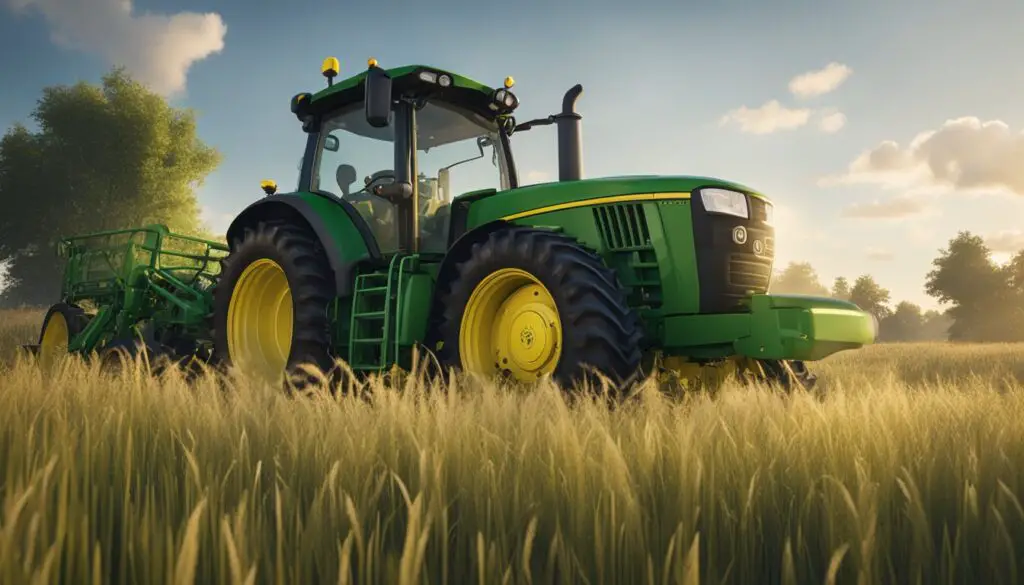
Recognizing and troubleshooting common mechanical issues can spare you from unnecessary downtime. Problems with starting, power loss, or heating are a few of the technical hiccups you may encounter with the John Deere 1025r. Taking a proactive approach to fluid and filtration maintenance can also help prevent some of these challenges. Regular upkeep and knowledge of operational nuances will aid in prolonging the life and performance of your tractor, ensuring that you get the most out of your investment.
Key Takeaways
- Learning about common issues can help you maintain your John Deere 1025r’s performance.
- Regular maintenance is essential for preventing fluid and filtration-related problems.
- Understanding operational tips enhances user experience and tractor longevity.
Understanding the John Deere 1025r
The John Deere 1025r is a versatile compact utility tractor that combines efficiency with operator ease. Diving into its key features and comfort will help you get the most out of this machine.
Key Features and Specifications
- Model: 1025r
- Category: Compact Utility Tractors
- Engine Power: 23.9 HP
- PTO Power: 18 HP
- Hydraulic System:
- Standard pump flow: 13.5 L/min
- Power steering pump flow: 23.5 L/min
- Transmission: Hydrostatic, 2-range
- Loader:
- Lift Capacity: Up to 520 lbs
- Compatible Loader: H120 Loader
- Mower Deck:
- Options include drive-over decks for easy installation
- Three-Point Hitch: Category 1
John Deere’s 1025r features such as the high horsepower, efficient hydraulic system, and the smooth hydrostatic transmission are key to its strong performance in a variety of tasks.
Operator Comfort and Controls
When you’re seated at the helm of the 1025r, you’ll notice the comfort and ergonomics in the design. The operator station is designed for easy access and visibility, reducing fatigue during long working hours. Here’s what enhances your experience:
- Comfort:
- Deluxe seats with armrests are adjustable to your preference
- TwinTouch™ foot pedals provide ease of use for the hydrostatic transmission
- Controls:
- Ergonomically placed levers and controls make operating the loader or mower deck intuitive
- Clearly labeled dials and switches improve the ease of operation for all levels of tractor drivers
Understanding and utilizing the 1025r’s features and controls ensures you can handle your tasks with confidence and comfort.
Common Mechanical Issues
In this section, you’ll learn about common mechanical issues that may occur with your John Deere 1025R. From engine overheating to hydraulic malfunctions, it’s essential to identify and address these problems promptly to maintain your tractor’s performance.
Engine Problems and Overheating
Your John Deere 1025R’s engine issues might include the engine overheating. Make sure to regularly check the Radiator Fins for dirt and debris, as clogs can disrupt the heat transfer process. Keeping them clean can prevent this issue.
- Checklist for Overheating:
- Clean radiator fins and check for blockages.
- Inspect the coolant level and refill if necessary.
Transmission and Gear Shift Issues
Transmission problems are also common and can manifest as difficulty shifting gears, or you might hear grinding noises. A drop in transmission fluid or worn clutch plates could be the culprit. Regularly check your transmission fluid levels and ensure they are adequate.
- To-Do for Transmission Issues:
- Verify transmission fluid level.
- Look out for signs of worn clutch plates.
Hydraulic System Malfunctions
Hydraulic problems in the John Deere 1025R often present themselves as leaks or a loss of power in the hydraulic system. It’s crucial to examine the system for any signs of leaks or corrosion and to ensure that all connections are tight and secure.
- Hydraulic System Checklist:
- Inspect for leaks.
- Look for corrosion and fix any connections.
Electrical System Problems
Electrical problems may arise from faulty wiring or corrosion. Keep an eye on your tractor’s electrical behavior and address any irregularities immediately. Routine checks of your electrical system’s wiring can help catch issues early.
- Electrical Checkpoints:
- Check for exposed or frayed wires.
- Ensure that your battery terminals are free from corrosion.
Fluid and Filtration Troubles
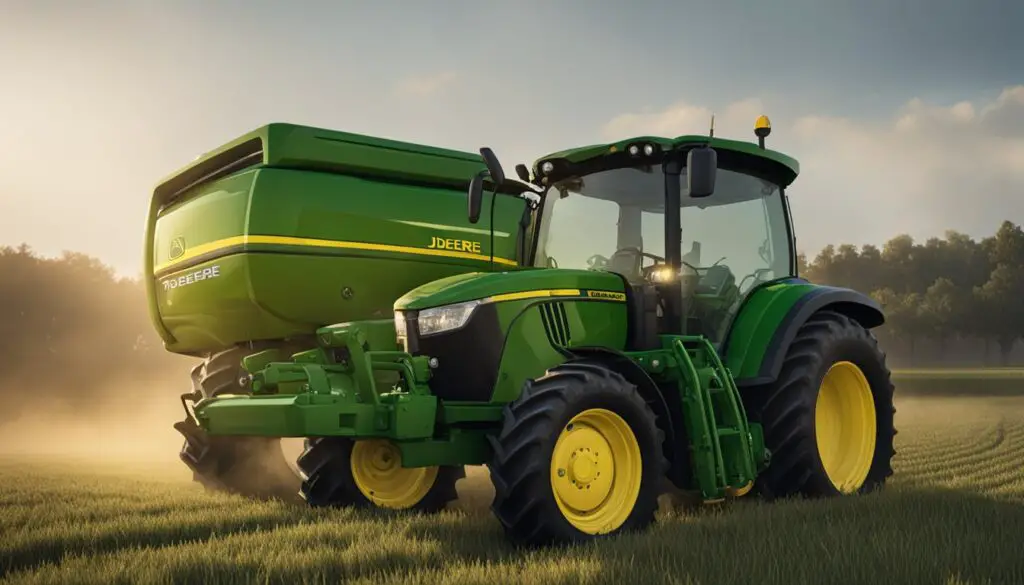
When it comes to your John Deere 1025r tractor, maintaining proper fluid levels and ensuring clean filtration systems are critical to its performance. Each subsection below addresses a specific area of concern to keep your tractor running smoothly.
Hydraulic Oil Issues
Your tractor’s hydraulic system relies on the right Hydraulic Fluid to function effectively. Using the incorrect type can lead to sluggish performance and even damage. Ensure you’re using the correct type of hydraulic fluid as specified by the manufacturer. If you encounter Water in the Hydraulic Oil, it can cause serious issues; drain the system and replace the fluid with fresh, appropriate hydraulic oil to fix this. Remember to regularly check and replace the Hydraulic Oil Filter to prevent blockages and maintain system efficiency.
Fuel System Inefficiencies
Your fuel system’s health is pivotal for your tractor’s operation. Fuel Filter problems often manifest as a loss in power or difficulty starting the engine. Regularly replace your fuel filter to prevent blockages and ensure the fuel system remains clean. If you’re facing Fuel System Problems, it might also be worth inspecting for any dirt or debris in the fuel lines which could affect performance.
Cooling System Considerations
Coolant levels are essential to prevent your tractor from overheating. Inspect your coolant regularly, and top it up if needed with the correct type. If you notice your tractor running hotter than usual, check for leaks in the system and ensure the Oil Filters are not clogged. An efficiently running cooling system will prolong the engine life and prevent overheating even during extended periods of use.
Maintenance and Prevention
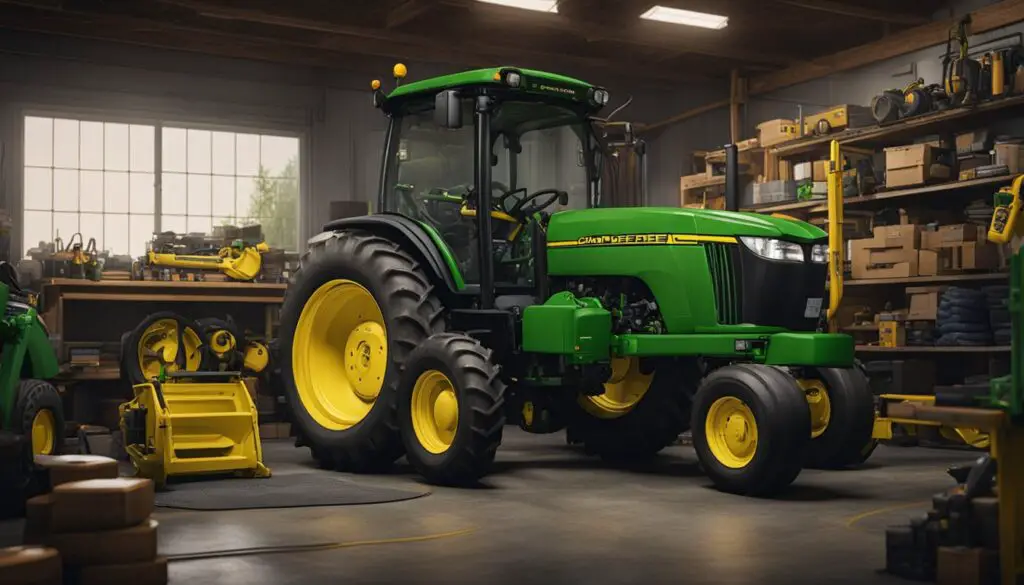
Maintaining your John Deere 1025r tractor is key to preventing common issues. A well-serviced tractor can help you avoid unexpected downtime and costly repairs.
Regular Service Schedule
To ensure your tractor performs optimally, follow the manufacturer’s service schedule. Regular maintenance often includes:
- Checking and replacing filters as needed. Your air filter is crucial for preventing contaminants from entering the engine.
- Monitoring your hydraulic fluid level, as it’s essential for the smooth operation of your tractor’s hydraulic system.
- Cleaning radiator fins to prevent engine overheating. Overheating can decrease the lifespan of engine components.
Create a checklist for each service interval:
| Interval | Service Task |
|---|---|
| 50 hours | Check engine oil level, air filter |
| 100 hours | Replace engine oil, check hydraulic fluid |
| 200 hours | Clean radiator fins, replace filters |
Replacing Parts and Components
Replace worn parts immediately to avoid further damage. Filters, for instance, play a pivotal role in the longevity of your engine and should be replaced as per the service intervals. If you encounter troubleshooting issues or can’t pinpoint the problem, it’s wise to consult a professional mechanic. Certain repairs should not be attempted without proper tools and experience.
Remember, using genuine John Deere parts ensures the perfect fit and function for your 1025r tractor.
Operational Challenges
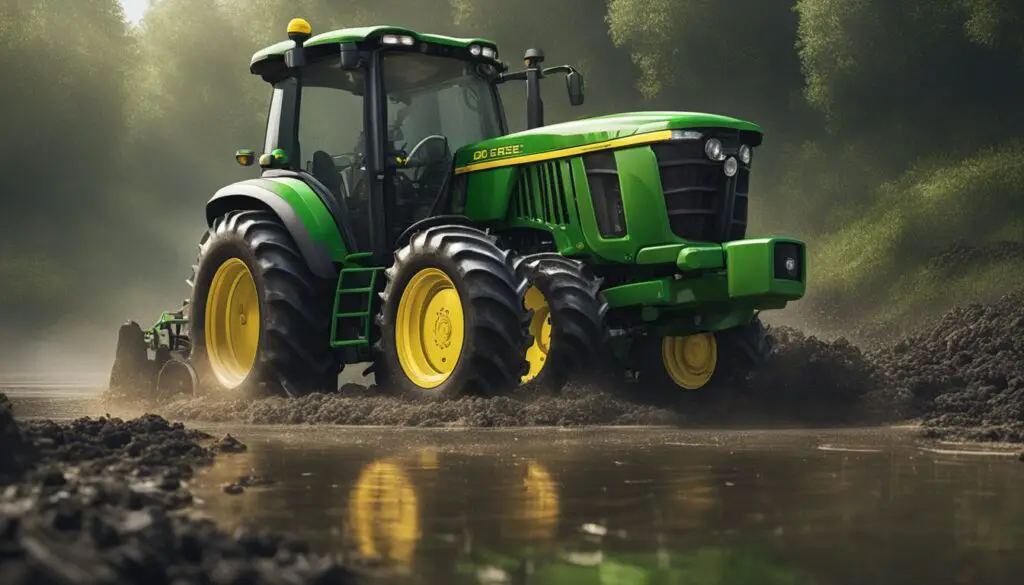
When operating your John Deere 1025R, you might encounter a couple of specific issues that can impact its efficiency and reliability. This section will guide you through these potential challenges.
Starting Difficulties and Performance
You might face starting issues with your John Deere 1025R, which can range from a dead battery to more elusive problems like difficulty starting in cold weather. To combat starting difficulties:
- Check your battery terminals for corrosion and ensure they’re securely connected.
- Keep an eye on the battery’s charge level, especially during colder months when batteries tend to lose charge more quickly.
If you notice decreased speeds or poor performance, the cause could be as simple as a clogged fuel filter or air intake system. Regular maintenance such as changing filters or checking the fuel quality can help maintain your tractor’s efficiency and keep you moving at the right pace.
Attachment and Accessory Integration
Your tractor’s versatility is one of its best features, allowing you to attach various tools like a tiller, but integrating these can sometimes introduce problems. Here’s how you can handle common issues:
- Ensure that attachment connections are tight and secure to avoid any gear slippage.
- Familiarize yourself with the PTO shaft operation, as incorrect use can lead to reduced performance or damage.
Remember, these operational challenges are common and often have simple solutions that can keep your John Deere 1025R running smoothly.
Practical Tips for John Deere 1025r Owners
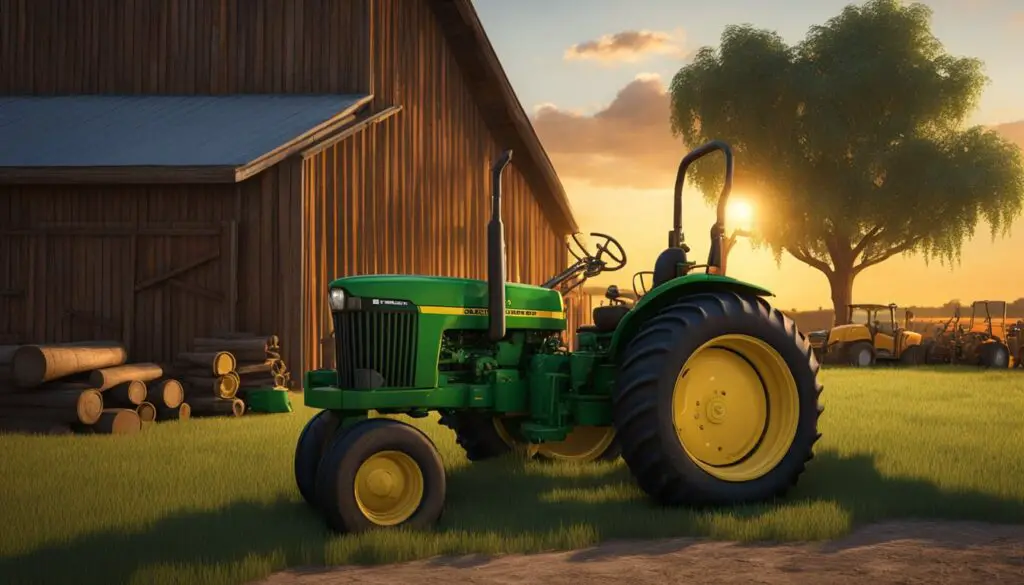
John Deere 1025R tractors are powerful tools for small-scale farmers, landscapers, and gardening enthusiasts, but like all machinery, they require proper use and maintenance. By optimizing your tractor for various use cases and adapting to different weather conditions, you can maintain peak performance and longevity.
Optimizing Your Tractor for Different Use Cases
- Small-Scale Farmers: For plowing and tilling, ensure your tractor’s hydrostatic transmission fluid is at the correct level and viscosity to avoid issues with moving parts. Regularly check the steering column for responsive control.
- Landscaping and Gardening: Attachments for the 1025R can be changed according to your landscaping needs. Use a front-end loader for moving soil or mulch and mowing decks for keeping grass at the desired length.
For each use case, familiarize yourself with the maintenance routines specific to the attachments involved.
Weather and Environmental Adaptation
- Cold Weathers: In cold weather, your 1025R’s oil can thicken, known as ‘cold oil’, which might make starting difficult. Always let your tractor warm up before use to ensure the oil circulates properly. Weather Condition Tips For Your Tractor Cold Weather Use a block heater, check antifreeze levels, warm up time Wet Conditions Keep moving parts lubricated, avoid water in the fuel
- General Tips: Keep an eye on the weather forecast and store your tractor appropriately to protect it from extreme weather conditions. Regularly inspect the hydrostatic transmission fluid and replace it if you notice contamination to prevent damage to your tractor’s transmission.
Remember, consistent care tailored to your John Deere 1025R’s use cases and the environment you operate in will help prevent many common issues and preserve your tractor’s condition.
Frequently Asked Questions
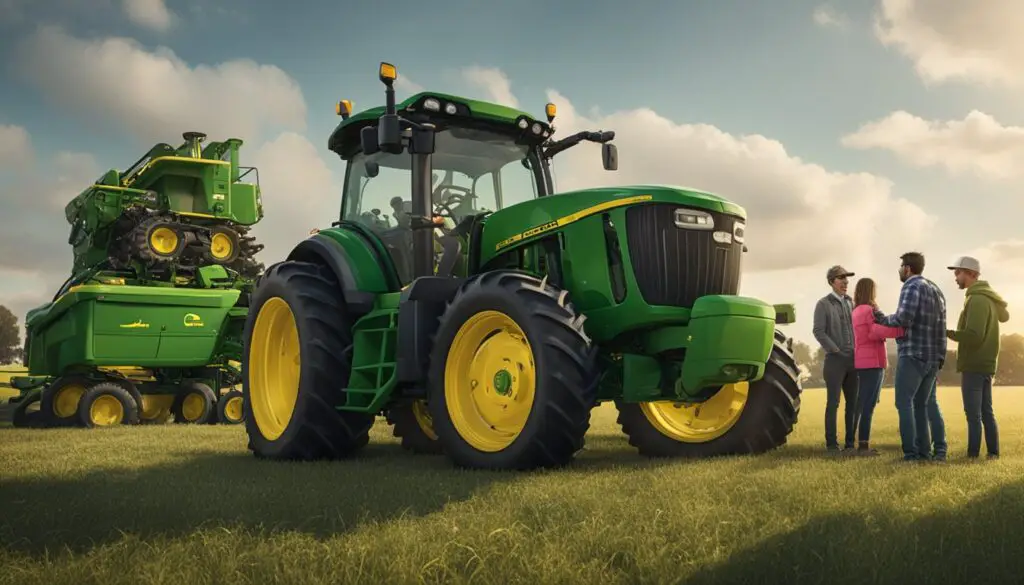
In this section, you’ll find targeted information addressing common concerns and providing troubleshooting steps for the John Deere 1025R tractor. We aim to help you resolve some of the typical issues you might encounter.
What common issues do owners report with the John Deere 1025R?
Owners report hydraulic malfunctions, overheating engines due to fan belt issues, difficulty starting, and electrical complications. Regular maintenance can often prevent or resolve many of these problems.
How do I troubleshoot hydraulic problems in a John Deere 1025R?
Check the hydraulic fluid level first; low levels can lead to improper function. Also, ensure that proper hydraulic oil types are used as different temperatures may require different oil viscosities.
What steps should be taken for electrical troubleshooting on a John Deere 1025R?
Start by checking your battery’s charge and connections. Then move on to the fuel control lever and switches. Issues here can often prevent starting or cause erratic engine behavior.
Are there any known transmission problems with the John Deere 1025R?
Some known transmission issues include difficulty shifting gears, grinding noises, or slipping gears. These symptoms can signify low transmission fluid, worn clutch plates, or problems with the transmission belt.
How can I address PTO engagement issues on my John Deere 1025R?
If the PTO (Power Take-Off) is not engaging, check the PTO switch for functionality. Worn-out pumps and couplings, such as those for power steering or hydraulics, can also affect PTO operation.
What are the fuel system complications commonly encountered by John Deere 1025R users?
Fuel system issues can range from clogged fuel filters to problems with fuel quality. Ensure that your fuel is not contaminated, and replace the fuel filter regularly to prevent starting and running issues.

Leave a Reply